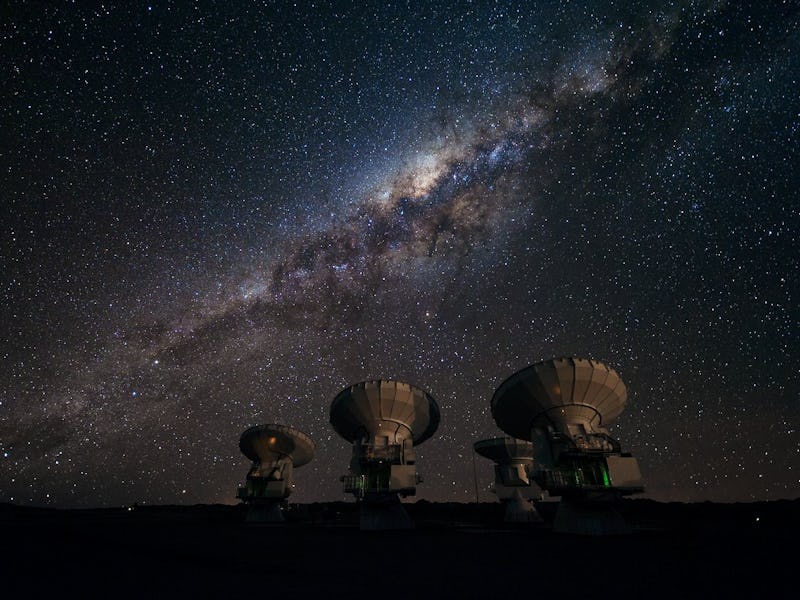Astronomers Discover Oldest-Known Magnetic Field Around an Ancient Galaxy
This ancient galaxy has a magnetic field 1,000 times weaker than the one around Earth.

An ancient structure appeared to a telescopic array in the Chilean highlands, but astronomers don’t yet fully understand what they’ve discovered.
Researchers found the oldest case of a galactic magnetic field. It dates back to when the universe was about 20 percent its current age, roughly 2.5 billion years after the Big Bang. The new finding, made with the Atacama Large Millimeter/submillimeter Array (ALMA) from the European Southern Observatory (ESO) in Chile’s Atacama Desert, is exciting.
Magnetic fields are fundamental to the evolution of galaxies. Seeing one so early on could help explain our cosmic origins. But, the finding inspires new questions, too. That’s because, at least in the modern universe, magnetic fields are born out of frenzy. What supplied the necessary energy to create a galactic magnetic field so far back in time is a mystery.
The magnetic field in the ancient galaxy 9io9. ALMA antennas detected the faint light from dust grains in the galaxy, which are somewhat aligned with the magnetic field and revealed its presence.
ESO announced the discovery on Wednesday. The research is also detailed in a paper published in the science journal Nature.
What is a galactic magnetic field?
Magnetic fields are common throughout outer space. Refrigerator magnets and compasses are examples of this force at work. And if you have iron shavings around, you can sprinkle some on top of a piece of paper, place a magnet underneath, and presto, you will see the lines of the magnetic field.
A magnetic field is created by the movement of charged particles. Earth has a magnetic field, produced as the molten material deep within itself churns. The Sun, the planet Jupiter, and the moon Ganymede also have magnetic fields. Black holes have magnetic fields, too, which twist to extremes as doomed material captured by their immense gravities zooms around for thousands of years before falling into them.
This recipe is what makes the discovery of the magnetic field around ancient galaxy 9io9 so interesting.
In modern galaxies like the Milky Way, galactic magnetic fields are the sum total of stars and supernovas. As they blast out charged particles and energy into space, the hydrogen gas that wafts around as the interstellar medium also gets excited.
This activity gets another boost from the galaxy’s rotation. Stars aren’t stationary, and in fact, the Sun takes about 200 million years to go once around the center of the Milky Way. (Dinosaurs roamed the Earth when the Sun was most recently at the opposite end of the galaxy to where it is today.)
But in the time of 9io9, stars weren’t as evolved or behaving the way they do today. So how its magnetic field formed is a major question.
Best guess
According to ESO, the team believes the field may have formed from charged particles associated with intense stellar formation of the early universe.
Although 9io9’s field is 1,000 times weaker than the one around Earth, it may have laid the groundwork for how later generations of stars formed. And this, then, would influence the strength of galactic magnetic fields that appear later on.
Whatever the answer, astronomers witnessed the seeds of a quintessential cosmic phenomenon.
This article was originally published on